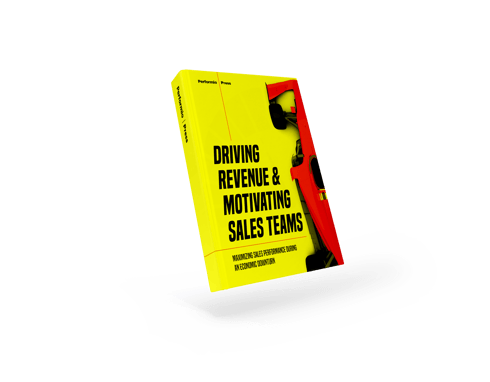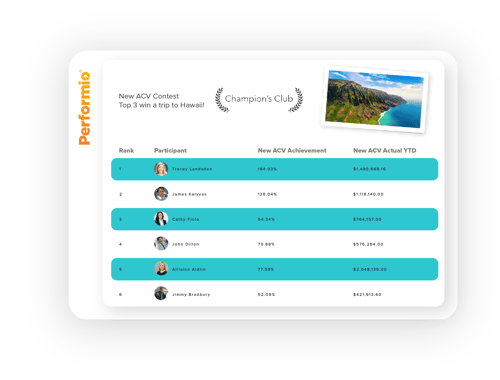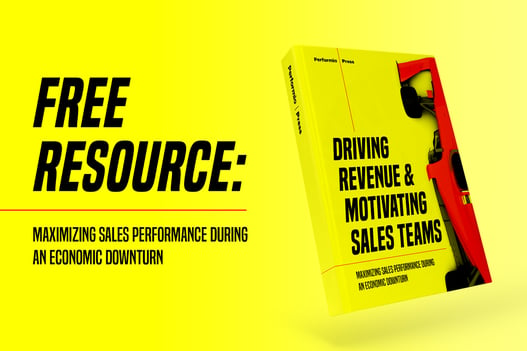Data. Numbers. Analysis. Charts, graphs, and everything in between. “Uh, I was told there’d be no math.” Haha, right. In a world that seemingly has mountains of data on anything and everything, it begs the question…What good is data if you have no way to easily access it, to visualize it, to use it to your advantage?
Many tech companies are starting to sound like the fast food of tech, only instead of “Arby’s, we have the meats” it’s “Insert tech company here…we have the data.” Here’s the deal with sales data. YOU have the sales data. But, how do you easily analyze it and use it for good? That’s often a tall order, and I’m not talking about an Arby’s half pound beef and cheddar sandwich, which is more likely to increase your waistline than your revenue. Let’s sink our teeth into reversing that as we explore the five ways to increase revenue with better sales data analysis.

Sales data analysis helps illuminate the most effective structures, processes, and tactics, so you can generate more and bigger sales, maximizing your revenue.
Rather than pitching as broadly as possible to anyone who will listen, you can direct your sales toward the people most likely to buy your offerings, use the most optimal methods to move them along each step of the funnel, and ultimately result in more sales.
Put simply, smart sales data analysis drives increased revenue.
Additionally, the massive layoffs from Big Tech in recent months have led to a surplus of sales talent looking for jobs—but they may not be on the market for long. Companies who want to recruit that talent will need to set themselves apart, and those that run data-driven sales teams will be well positioned to make competitive offers. (See our free ebook, The Big Tech Talent Surplus, for more on this.)
So how exactly do you go about using data to drive sales and increase revenue? That’s what we’re here to talk about. In this article, we’ll walk you through the Sales Performance Maximization Formula, how you source your data, and five specific examples of increasing revenue with data analysis.
Data and the Sales Performance Maximization Formula
Part of increasing revenue is about getting the most out of your sales team. And for that, we recommend using what we call the Sales Performance Maximization Formula to help your team do their best:
Expectations + incentives + empowerment + inspiration − obstructions = Performance

Each element of the formula is about putting your sales reps in the best possible position to succeed. And at each stage of the formula, you should rely on data to inform your decisions, allowing your team to thrive.
Goal-setting
Clear and reasonable expectations mean your sales reps are never left wondering what they need to do or how they ought to do it. And coming up with the right expectations means digging into past sales data to learn what you can reasonably expect from your team without pushing them to burnout.
It also means looking up data on current market conditions to understand how the present environment may positively or negatively affect their performance as compared to previous periods. With data-backed goals in place, your team will be well set to bring in as much revenue as possible.
Comp structure
Compelling incentives motivate your team to do their best work. And aligning compensation plans with your company’s goals helps to ensure that your sales reps’ efforts are being properly directed. You’ll want to examine the data on industry standards for levels of pay so you can offer an enticing package that will attract and retain the best talent.
And you’ll need to look at your internal data to learn which product lines your business should most emphasize so you can structure compensation accordingly. The right data lets you focus your sales reps’ efforts for maximum revenue.
Besides this, a competitive comp plan will attract better talent, which will (hopefully) translate to more and bigger deals.
Leadership and management
Access to the right tools and resources empowers your team. Inspiration, e.g., vision-casting and public recognition for a job well done, helps boost morale. And removing obstructions that stand in their way lets them focus on their work, rather than putting time and energy into tasks and processes that don’t impact goals.
For all of these things, you’ll want data into what your people need in order to best meet those needs, setting them up for success and setting your business up for increased revenue. Some of this data will come from surveying your employees to learn what they want, and some of it will come from monitoring performance as you utilize different tools or techniques to learn what really works best.
To learn how the Sales Performance Maximization Formula can drive success even when market conditions are poor, download our free ebook, Maximizing Sales Performance During an Economic Downturn: How to Motivate Sales Teams and Drive Revenue.

Sourcing your sales data
Broadly speaking, there are two kinds of data you can use to improve revenue: existing data you can track yourself and new data you’ll need to source from elsewhere. Both are important for gaining vital business insights.
Utilizing existing data
Every interaction with a customer, every sale completed, every call made represents data. But it only becomes useful if you have the ability to track, organize, and analyze that data for insights.
This should include data on your customers. As you learn more about who your ideal customers are, you’re better able to refine your strategies to target those from a similar background in similar fields who are more likely to become new customers. Then you can use that refined target data to gain additional customers with relatively little additional effort, bringing in more revenue.
It will also involve data on your own products and services. Different factors like where you’re selling, what industries you’re selling into, and which products or services you’re selling can all impact how much revenue you’re bringing in. Armed with the right data, you’re able to refine your offerings to focus on the areas that generate the most revenue for your company.
And it’ll encompass data on your sale’s team’s performance. Tracking sales KPIs lets you learn what methods work best, so you can focus on those that let your team bring in the most revenue. It also helps you understand how your team is living up to expectations. From there you can see where praises are owed and where improvements need to be made in order to ensure continued success.
For all of this internal data, you need the right tools to manage it all. That’s where Incentive Compensation Management (ICM) software like Performio comes into play. Performio automatically tracks all of the above and more, organizing and analyzing it for you in convenient dashboards and easily generated reports. You’ll have the complete picture of all the relevant data at all times.
Sourcing new data
As crucial as your own data may be, you’ll also want to supplement it with data you gain from elsewhere. Other businesses, other sales teams, other leaders in your industry have additional data that you could use, but you have to know what to look for and how to access it. Doing so can give you access to vital insights for developing strategies, making sales, and generating revenue. Depending on your capabilities, you can also collect more data yourself.
Market research data (whether commissioned by a third-party or conducted by your own team) can give you valuable insights that either directly or indirectly increase revenue. It can reveal unknown pain points, emerging customer segments, sentiments regarding your value proposition, etc. The important thing is having a goal in mind and incorporating learnings in your sales process moving forward.
You can also gain data by sending out surveys to your customers. This can be a good way to learn more about the people who are already purchasing from you, but be aware that their responses may be skewed compared to the public at large. Such surveys can help you better understand existing customers, but you shouldn’t rely on them for gauging broader market conditions.
Five practical ways to increase revenue with better sales data analysis
Using the internal and external data you’ve collected, you can drive sales performance in a number of ways. We’ll take a look at five examples.
1. Align compensation plans with revenue-driving activities
Every sale is a win, but not all sales are equal. Some kinds of deals yield distinctly more profit for your company than others. And it isn’t always obvious which ones they are. The amount of time and effort it takes to make a deal, plus various fees, commissions, and other costs associated with a given sale can obscure the true profit generated, unless you have a data trail keeping track of everything from start to finish.
But if you do have those insights, you can see exactly which kinds of deals to prioritize based on how profitable they are. Then you can adjust your compensation plan accordingly to reward salespeople for focusing on these types of deals. Ultimately, aligning a sales comp plan to the most profitable deals should motivate your sales reps to realize more of those deals than they otherwise would have. And that leads to greater revenue.
Additionally, you can use your data to identify the specific behaviors that most help your sales reps achieve their sales goals. Then define your KPIs to focus on these factors that your salespeople can act on and control. For example, data can give you insights into how many connections each rep needs to make, how many of those connections turn into conversations, how many of those conversations turn to demos, and how many of those demos result in new customers.
2. Generate additional sales from past customer activities
Once a sales rep secures a first purchase from a new customer, you gain a foot in the door to potential future purchases. Now that the customer has first-hand experience with using your product or service, they may be inclined to upgrade to a higher-tier offering, purchase additional addons, or both.
Using past data, you can isolate lists of customers based on specific purchasing criteria, along with other customer information that may help refine the ideal target audience, then reach out to them with up-sell or cross-sell opportunities.
3. Identify and reward high-performing sales reps
It’s important to make sure your sales reps feel seen and appreciated, especially when they’re doing outstanding work. You want to publicly celebrate wins, foster an environment of friendly competition and support, and encourage everyone to continually level up their game.
In order to single out high-performing employees for accolades, you need to know how well each of them is doing—both individually and in relation to the whole. And the best way to access that data is through an ICM like Performio.
In addition to letting management see the performance of each sales rep, Performio also gives the reps themselves transparency into their progress, letting them see how far along they are toward meeting their goals and enabling them to make adjustments as needed. Additionally, the leaderboards feature automatically shows how the highest performers compare to each other, providing public recognition for a job well done.

4. Pinpoint (and eliminate) sales bottlenecks
Which parts of your sales process are taking the longest? What points of friction cause things to get bogged down, preventing your reps from successfully moving all the way through to a sale? By analyzing sales data for every step along the way, you’ll be able to find those sticking points.
Once you’ve found sales bottlenecks you’d like to address, you can look for ways to unblock those phases. If a solution to a given problem isn’t immediately obvious, returning to the sales data may offer additional insights into a way forward.
Look across all your reps to see how they perform at the stage that causes problems. Identify any reps who are consistently able to move through that stage quicker than the others. Then work with those reps to learn what they’re doing differently that others could emulate. (And if they’re able to offer a solution that helps improve efficiency for everyone, be sure to circle back to our previous point about rewarding high-performing sales reps.)
5. Identify which conversion rates need to be improved
The sales cycle is a series of filters. At each stage of the sales funnel, you want to convert as many leads as possible to the next stage, all the way through to their conversion into customers. But some parts of your funnel are going to be leakier than others—with far fewer leads converting to the next stage than desired.
By analyzing your sales data, you can identify those key drop-off points. Then you can look into anything that may be preventing leads from moving on to the next stage. By adjusting conversion rates from one phase of the sales pipeline to the next, you can optimize for customer flow and revenue.
These five examples are just the beginning of how you can use sales data analysis to increase revenue. There are many more creative opportunities for you to pursue.
Use sales data to drive performance with Performio
Performio’s ICM gives you a start-to-finish look at your sales data, producing valuable insights at every step along the way. You’ll be able to see which leads have the best conversion rates, which sales reps are securing the most customers, which methods are the most effective, and how all of it comes together to drive revenue.
Our software tracks everything for you, providing sales managers with all the data they need to keep their teams on course toward meeting their goals, and giving sales reps a real-time window into how they’re doing and what they can expect to earn.
To learn more about tracking and improving performance, check out our free ebook, Maximizing Sales Performance During an Economic Downturn: How to Motivate Sales Teams and Drive Revenue.

And if you’re ready to see how Performio can help your business, request a demo today.
